May 14, 2025 | 15:08 GMT +7
May 14, 2025 | 15:08 GMT +7
Hotline: 0913.378.918
May 14, 2025 | 15:08 GMT +7
Hotline: 0913.378.918
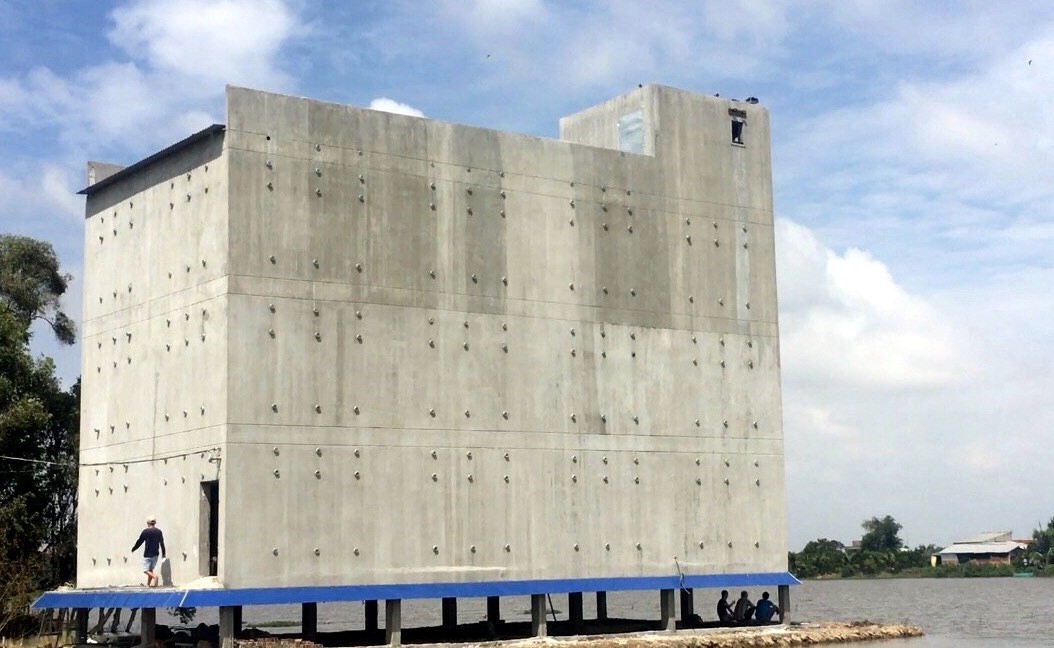
A house to attract swiftlets. Photo: KS.
Mr. Pham Duy Khiem, President of the Phu Yen Swiftlet Farming Association cum Vice President of the Vietnamese Swiftlet Farming Association, said that the country now has approximately 24,000 houses to attract swiftlets, an increase of 4,000 houses compared to the end of 2021.
However, it is alarming that the swiftlet flocks are in sharp decline. Many swiftlet houses in the Central region and some Southeast and Central Highlands provinces that used to attract swiftlets without any problem now suffer a decline in the yield of swiftlet's nests.
"Usually, when swiftlet houses increase, the yield of swiftlets and swiftlet’s nests must also increase according to a direct proportion. However, before 2020, about 150 tons of swiftlet’s nests could be harvested every year, but after 2022 and up to the present time, the yield of nests is preliminarily calculated at only over 100–120 tons," said Mr. Pham Duy Khiem.
According to the President of the Phu Yen Swiftlet Farming Association, there are two main reasons for the increase in swiftlet houses in contrast to a decrease in the yield of swiftlets and swiftlet’s nests.
The rapid urbanization process in the provinces and cities nationwide leads to the narrowing of swiftlets' food area. Thereby, swiftlets migrate, or, to put it more accurately, they move their flock to other area in search of food sources.
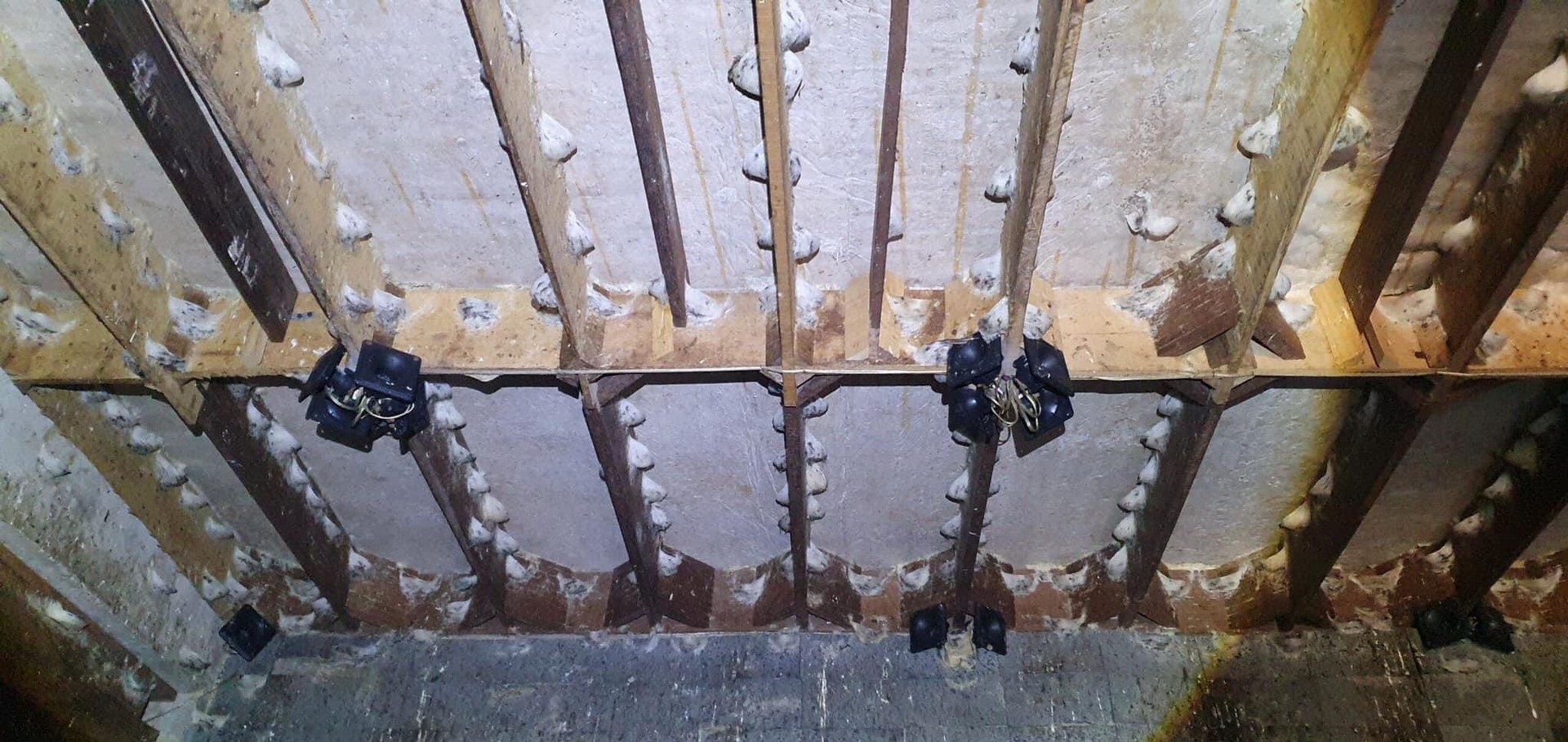
Swiftlets attracted give swiftlet’s nests. Photo: KS.
Meanwhile, some provinces still have abundant food resources along the Cambodian border, where a lot of young birds gather for food. Thus, the lack of food areas has caused swiftlets in the Central provinces to be moved, leading to a decrease in the yield of swiftlet’s nests, even in some Southwest provinces.
As for some provinces that are not urbanized, young birds still move because we produce unfriendly environmental agriculture and abuse chemical fertilizers and pesticides, so insects that are food for swiftlets are destroyed.
Therefore, even though there are vast rice fields, ponds, lakes, rivers, and streams suitable for the swiftlet's development conditions, no more food forces swiftlets to move to search for food in unspoiled, untouched areas such as U Minh Forest or forests strictly protected by the state.
Therefore, the swiftlet houses in the Mekong Delta still have a high yield of swiftlet’s nests thanks to these abundant food areas. But in the provinces that produce agriculture by abusing fertilizers and drugs, the yield also decreased a lot.

Trapping birds is one of the reasons for the decline in swiftlet flocks. Photo: KS.
The main reason why wild birds in general and swiftlets in particular declined sharply was the use of invisible nets to hunt. This is a type of net originating from China; each net has a height of 1-2m and is stretched for hundreds of meters. After being stretched, it is almost invisible in the air, making it difficult for even the human eye to see from afar. Usually, invisible nets are set by subjects to trap birds in fields or other places where swiftlets search for food.
Swiftlet has a feature that, when going to search for food according to the call of the flock, once a bird is caught in the net, the whole flock rushes to save its fellow and is also caught in the net. So sometimes a swiftlet house has several thousand birds today, but in the evening, there are only a few birds left, which becomes a common occurrence in swiftlet houses.
Since 2019, the situation of trapping wild birds, including swiftlets in Phu Yen has occurred in many places in the province, and this province has become a hot spot for the problem of trapping birds.
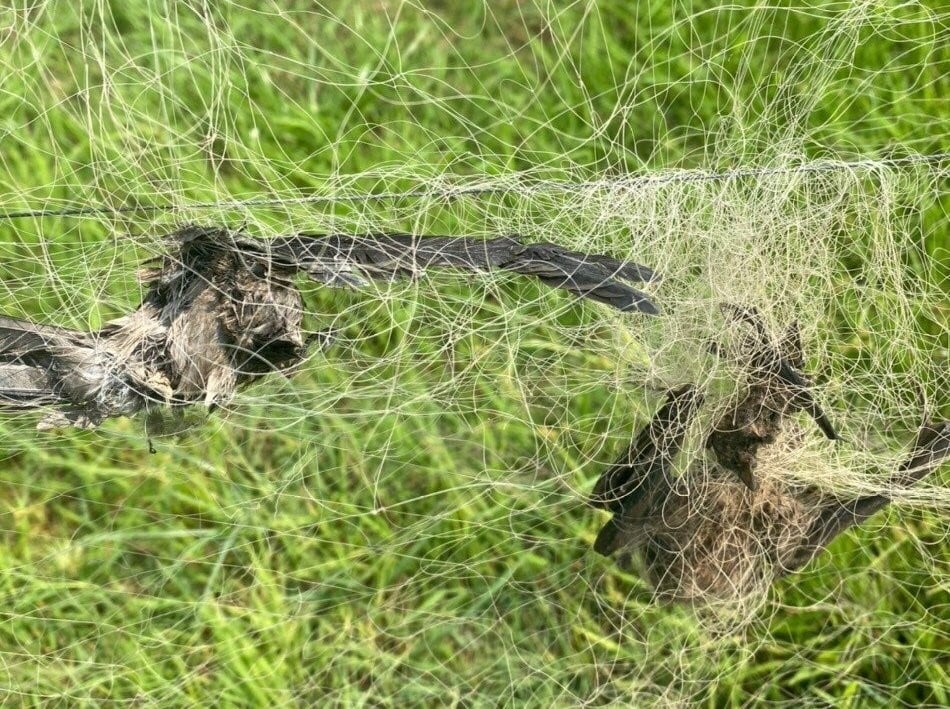
The swiftlet was killed by a net trap. Photo: DK.
Mr. Le Quyet Thang, Deputy Head of the Swiftlet Protection Committee (under the Phu Yen Swiftlet Farming Association), said that at present, many people still do not understand that hunting wild birds and swiftlets is a violation of the law. People also think that "birds of the sky, fish of the water" are bestowed by heaven, so anyone has the right to catch and trap birds.
"Over the past time, we have continuously detected cases of trapping swiftlets in the province. Since the beginning of the year, we have detected nine cases, including one case of trapping birds with invisible nets on a large scale in Hoa An commune, Phu Hoa district. The authorities have made a record of the violating subject and confiscated exhibits, including motorbikes, more than 300 meters of invisible nets, and a cage full of sparrows and even swiftlets," said Mr. Thang.
However, according to Mr. Thang, the most painful case is the one of trapping swiftlets with nets in Phu Vang village, Binh Kien commune (Tuy Hoa city), in 2021, when he witnessed nearly a hundred swiftlets caught in a thick net squealing pitifully.
A hot spot for bird trapping is also mentioned in La Gi town (Binh Thuan). Mr. Do Nguyen Thy Linh, President of the Binh Thuan Swiftlet Farming Association under the Vietnam Swiftlet Farming Association, said that 2-3 years ago in Tan Tien commune, La Gi town, there was a village with dozens of households specializing in hunting wild birds, of which the main ones are swiftlets.
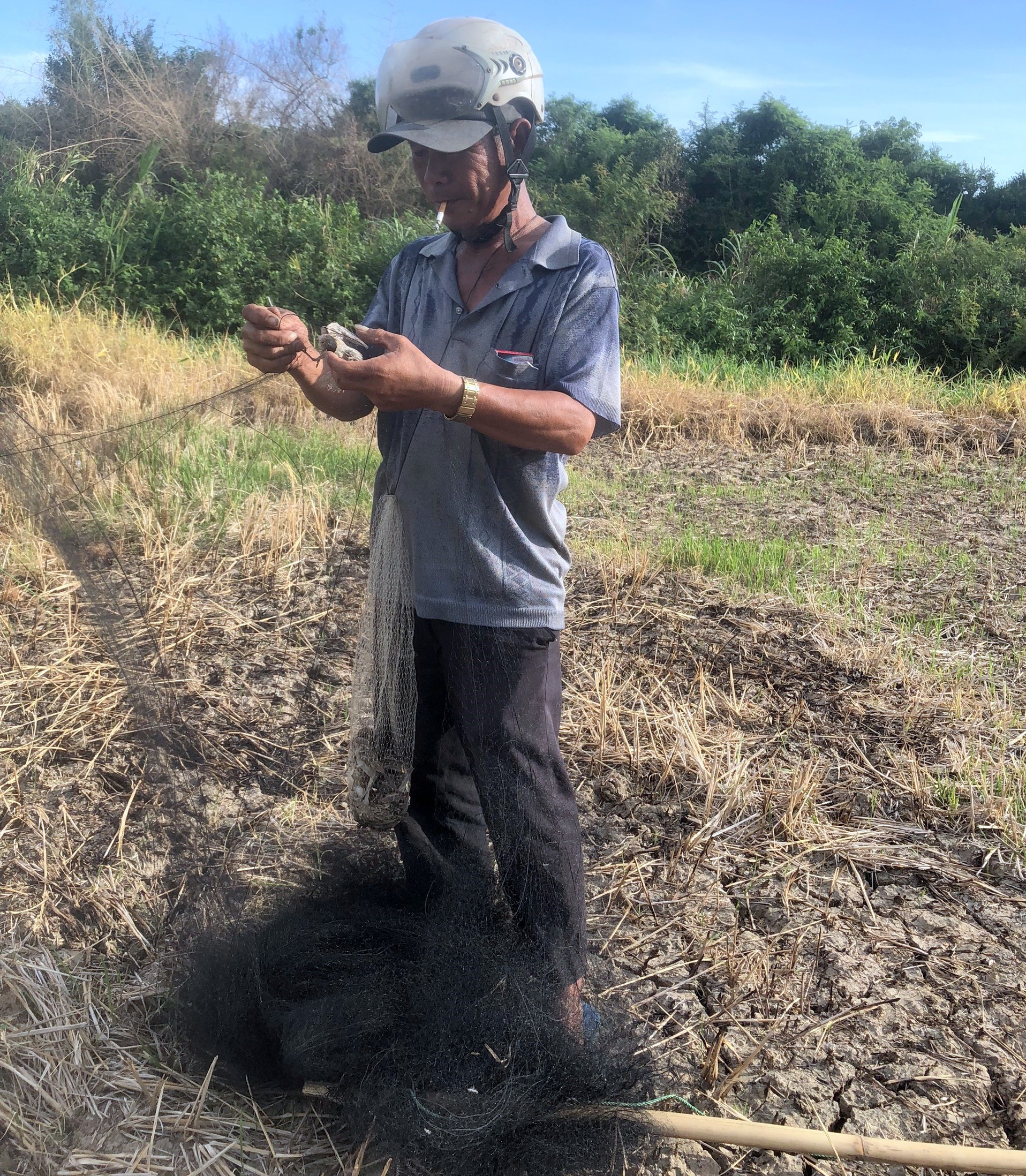
Since the beginning of the year, the Phu Yen Swiftlet Farming Association has detected nine cases of trapping birds. Photo: KS.
"Currently, although it has reduced, the situation of trapping swiftlets still remains. At present, if the owner of a swiftlet house goes on patrol and finds sufficient evidence for trapping swiftlets, the authorities will still handle it. Now there is a law, and people know the law but are not afraid; they are still hunting swiftlets, just not as openly as before. Since the beginning of the year, the Binh Thuan Swiftlet Farming Association has detected seven cases of trapping swiftlets," said Mr.Linh.
According to Mr. Pham Duy Khiem, the situation of hunting swiftlets in an extinction style has caused the swiftlet flock to gradually decrease, causing considerable damage and frustrating farmers. In addition to Phu Yen and Binh Thuan provinces, provinces such as Dong Nai, Binh Duong, Binh Phuoc, Ba Ria-Vung Tau, Dak Lak, etc. are also "hot" about trapping swiftlets. As for the remaining provinces, trapping birds still remains, but the situation is milder.
Mr. Le Quyet Thang, Deputy Head of the Swiftlet Protection Committee under the Phu Yen Swiftlet Farming Association, said that the Swiftlet Protection Committee currently has 12 members. Besides patrolling to detect cases of trapping swiftlets, we received information from swiftlet owners via the hotline of the Phu Yen Swiftlet Farming Association. At present, the people who are not involved do not care to reflect on trapping birds. While the area is vast, we cannot control where trapping birds occurs.
Translated by Huyen Vu Thu
![Multi-channel, multi-directional Vietnamese agricultural markets: [5] Safety is the key](https://t.ex-cdn.com/nongnghiepmoitruong.vn/608w/files/linhnhp/2025/05/13/trai-cay-viet-nam-170345_133-221148-0908330.jpg)
(VAN) The Middle Eastern market presents new opportunities for Vietnamese agricultural products, but safety in product quality, payment, and partnership relations is a fundamental principle.
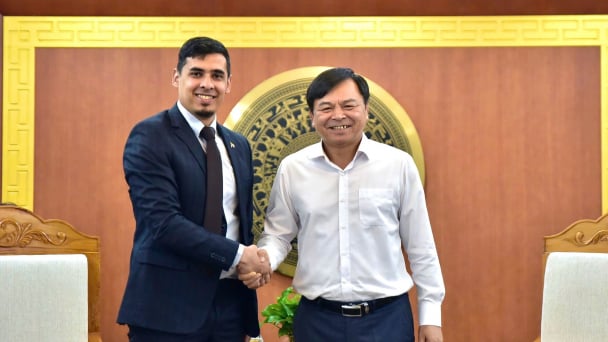
(VAN) Vietnam's participation in the AGROALBA project helps open up broader investment opportunities for enterprises to access markets in the fields of agriculture.

(VAN) On May 13, Deputy Minister of Agriculture and Environment Phung Duc Tien held a meeting with Cuban Deputy Minister of the Food Industry Javier Francisco Agular Rodriguez.

(VAN) Agriculture and environment sector experienced a 3.74% increase in growth during the first four months of 2025, with exports surpassing 21 billion USD. This growth was sustained by effective reforms and a trade surplus.
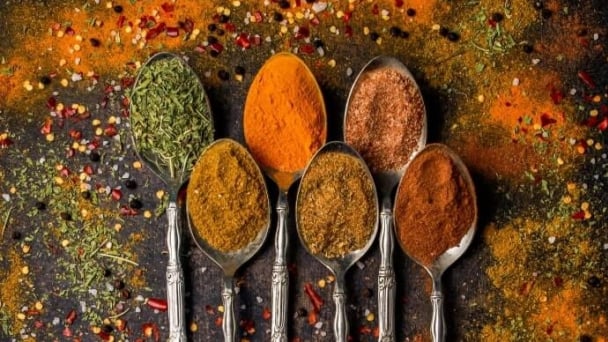
(VAN) Taiwan offers a promising market for Vietnamese turmeric; however, it enforces stringent standards, particularly concerning residual additives, colourants, and substances with potential carcinogenic effects.

(VAN) Through activities at Vietnam Sea and Island Week 2025, solutions will be developed to fully harness the potential and advantages of Vietnam's marine economy.
![Multi-channel, multi-directional Vietnamese agricultural markets: [4] EVFTA and the 0% tax advantage](https://t.ex-cdn.com/nongnghiepmoitruong.vn/608w/files/linhnhp/2025/05/12/day-chuyen-che-bien-tom-tai-1-nha-may-cua-sao-ta-205536_359-1044193.jpg)
(VAN) The near-complete elimination of import tariffs on Vietnamese goods makes the EVFTA the highest commitment the EU has ever made to a partner in its signed trade agreements.